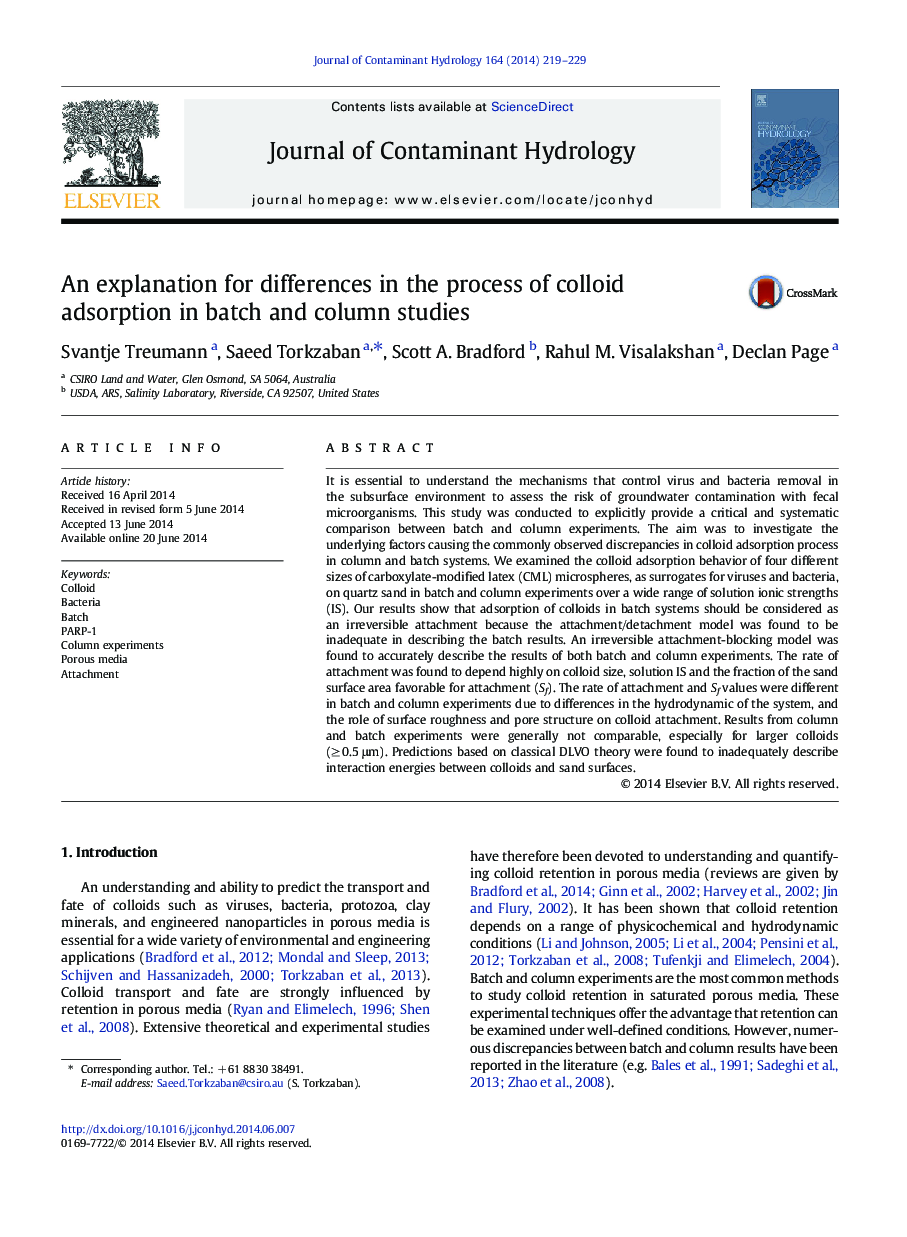| کد مقاله | کد نشریه | سال انتشار | مقاله انگلیسی | نسخه تمام متن |
|---|---|---|---|---|
| 6386545 | 1627044 | 2014 | 11 صفحه PDF | دانلود رایگان |
- Colloid adsorption in batch and column experiments is mainly controlled by irreversible kinetic attachment process.
- Attachment rate is higher in column than batch experiments.
- DLVO theory inadequately describes interaction energies between colloids and sand surfaces.
- When modeling the kinetic of colloid attachment, a blocking term may need to be included.
- Hydrodynamic forces and surface roughness are the important factors controlling colloid deposition.
It is essential to understand the mechanisms that control virus and bacteria removal in the subsurface environment to assess the risk of groundwater contamination with fecal microorganisms. This study was conducted to explicitly provide a critical and systematic comparison between batch and column experiments. The aim was to investigate the underlying factors causing the commonly observed discrepancies in colloid adsorption process in column and batch systems. We examined the colloid adsorption behavior of four different sizes of carboxylate-modified latex (CML) microspheres, as surrogates for viruses and bacteria, on quartz sand in batch and column experiments over a wide range of solution ionic strengths (IS). Our results show that adsorption of colloids in batch systems should be considered as an irreversible attachment because the attachment/detachment model was found to be inadequate in describing the batch results. An irreversible attachment-blocking model was found to accurately describe the results of both batch and column experiments. The rate of attachment was found to depend highly on colloid size, solution IS and the fraction of the sand surface area favorable for attachment (Sf). The rate of attachment and Sf values were different in batch and column experiments due to differences in the hydrodynamic of the system, and the role of surface roughness and pore structure on colloid attachment. Results from column and batch experiments were generally not comparable, especially for larger colloids (â¥Â 0.5 μm). Predictions based on classical DLVO theory were found to inadequately describe interaction energies between colloids and sand surfaces.
Journal: Journal of Contaminant Hydrology - Volume 164, August 2014, Pages 219-229
